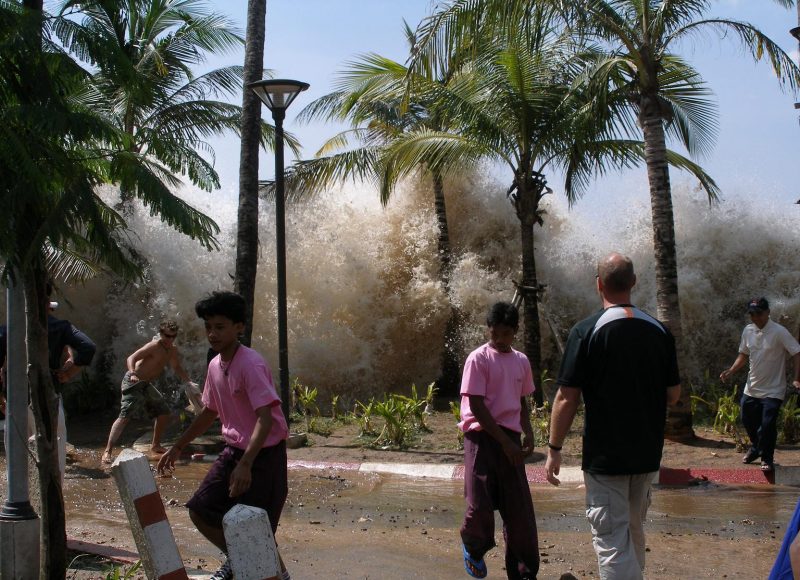
A new insight into magnetic fields, generated by tsunamis in seawater, might lead to earlier tsunami warnings for people who would otherwise be in danger. Scientists said December 21, 2021, that the magnetic fields generated by tsunamis arrive before the waves themselves. They said the magnitude of a tsunami’s magnetic field can help determine the potential height of the tsunami wave before it strikes land. Scientists can detect a tsunami’s magnetic fields only up to a few minutes earlier than previous methods. Yet those few minutes might provide precious time for people to seek higher ground.
The peer-reviewed Journal of Geophysical Research: Solid Earth published the scientists’ study on magnetic fields and tsunamis on October 18, 2021.
EarthSky 2022 lunar calendars now available! They make great gifts. Order now. Going fast!

Tsunami warnings via magnetic fields
Scientists have known for years that the force of tsunamis generates electric currents in conductive seawater, creating magnetic fields. They’ve speculated that these magnetic fields would arrive before the tsunami wave and that, if they could detect the magnetic fields from tsunamis, that detection could lead to earlier tsunami warnings. The 2009 tsunami in Samoa and the 2010 tsunami in Chile provided them with the evidence in the form of simultaneous measurements of magnetics and sea level to make their case.
How much earlier do the magnetic fields arrive? The answer depends on the depth of water along a particular coastline. These scientists found that the early arrival time is only about one minute before sea level change over a 15,700-foot (4,800-meter) deep sea. Author Zhiheng Lin of Kyoto University said:
It is very exciting because in previous studies we didn’t have the observation [of] sea level change. We have observations [of] sea level change, and we find that the observation agrees with our magnetic data as well as theoretical simulation.

Issuing tsunami warnings
Using data from the two tsunamis (2009 in Samoa and 2010 in Chile), the scientists compared simultaneous measurements of sea level change from seafloor pressure data and magnetic fields. They found that the primary arrival of the magnetic field is similar to the beginning of a seismic wave, which is currently what triggers tsunami warnings. The scientists were able to detect a wave height of only a few centimeters in the magnetic field.
AmericanGeosciences.org explains how current tsunami warnings occur:
To provide alerts as early as possible, initial tsunami warnings are usually based only on seismic information that detects the earthquake’s location and magnitude. Information from coastal sea-level gauges and offshore buoy stations confirms the existence or absence of a tsunami. Then, information from seismic data, sea-level gauges, and buoy stations are used to generate models that forecast tsunami arrival times and estimate coastal impacts. The models help warning centers update or cancel warnings as they learn more about the earthquake and resulting tsunami.

Some shortcomings
The magnetic field data can be used to improve tsunami source models, which predict the arrival time and wave height of the tsunami. Unfortunately, the new insight won’t help in all tsunamis. Limited observation stations limit the data from tsunamis. Also, their finding relates only to environments where deep water filters out other noise and allows the detection of the tsunami signal. Shallow coastal areas can’t be used for these models.
But even if the data are not useful in all locations, Lin says that providing warnings makes the predictions worthwhile.

Bottom line: Tsunamis create magnetic fields, which can be used to provide early warnings in certain situations.











